Mastering Web Application Development: Your Step-by-Step Guide for 2023
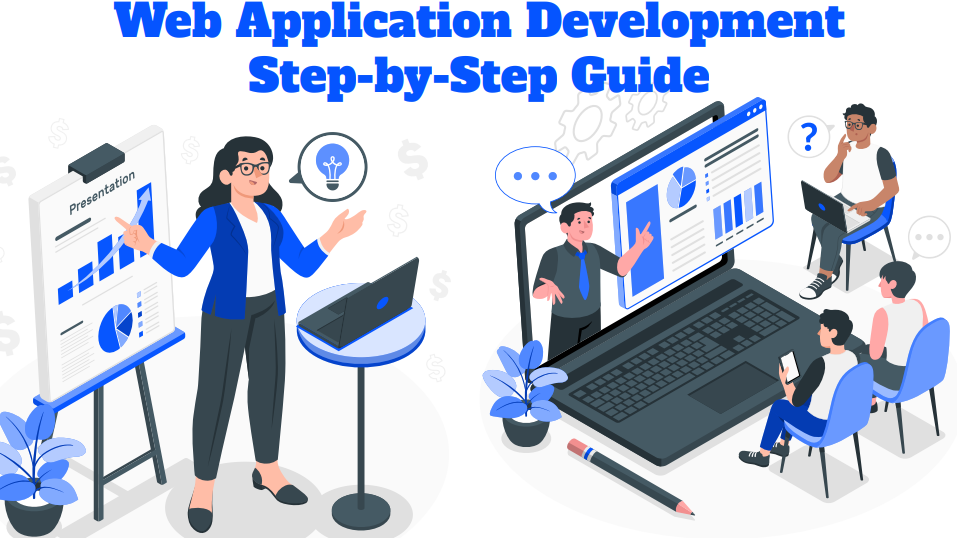
Introducing Web Application Development
Web application development is a dynamic and exciting field within the realm of software development. It focuses on creating interactive and user-friendly applications that users can access via web browsers. These applications run on web servers and can serve a wide range of purposes, from e-commerce platforms to social networking sites, and from productivity tools to online games.
Here are some key aspects to consider when introducing web application development:
1. Client-Server Model:
- Web applications operate on the client-server model. The client, typically a web browser, requests resources and data from a remote server. The server processes these requests and returns the requested information, which is then rendered in the user’s browser.
2. Front-End and Back-End:
- Web development is divided into front-end and back-end development. Front-end development involves creating the user interface (UI) and user experience (UX) that users interact with directly. It mainly utilizes HTML, CSS, and JavaScript. Back-end development involves the server-side logic, databases, and application functionality. It often employs programming languages like Python, Ruby, Node.js, or PHP.
3. Web Technologies:
- HTML (Hypertext Markup Language) is used to structure the content of web pages. CSS (Cascading Style Sheets) is responsible for the design and layout of web content. JavaScript adds interactivity and dynamic behavior to web applications.
4. Frameworks and Libraries:
- Developers often use frameworks and libraries to streamline web application development. Popular front-end frameworks include React, Angular, and Vue.js. Back-end frameworks like Express.js, Django, and Ruby on Rails simplify server-side development.
5. Databases:
- Databases play a crucial role in web applications. Developers use databases to store and manage data, whether it’s user information, content, or transaction records. Common database systems include MySQL, PostgreSQL, MongoDB, and SQL Server.
6. Web Servers:
- Web servers are software or hardware components that host web applications and deliver content to users’ browsers. Common web server software includes Apache and Nginx.
7. User Experience (UX) and User Interface (UI):
- A significant aspect of web application development is creating an intuitive and visually appealing user experience. This involves designing a user-friendly interface and optimizing the application’s flow.
8. Security:
- Web application security is paramount. Developers need to implement measures like authentication, authorization, data encryption, and input validation to protect against potential vulnerabilities.
9. Cross-Browser Compatibility:
- Ensuring that web applications work correctly on different web browsers and platforms is crucial. Developers must perform extensive testing to achieve cross-browser compatibility.
10. Deployment:
- Deploying web applications involves making them accessible to users on the internet. This can be done through web hosting, cloud platforms, or self-hosted solutions.
Web application development is a diverse and ever-evolving field that offers a wide range of career opportunities. It empowers developers to create innovative and accessible solutions that can reach a global audience. As technology advances, the world of web development continues to expand, making it an exciting and rewarding area to explore and master.
What is a Web Application?
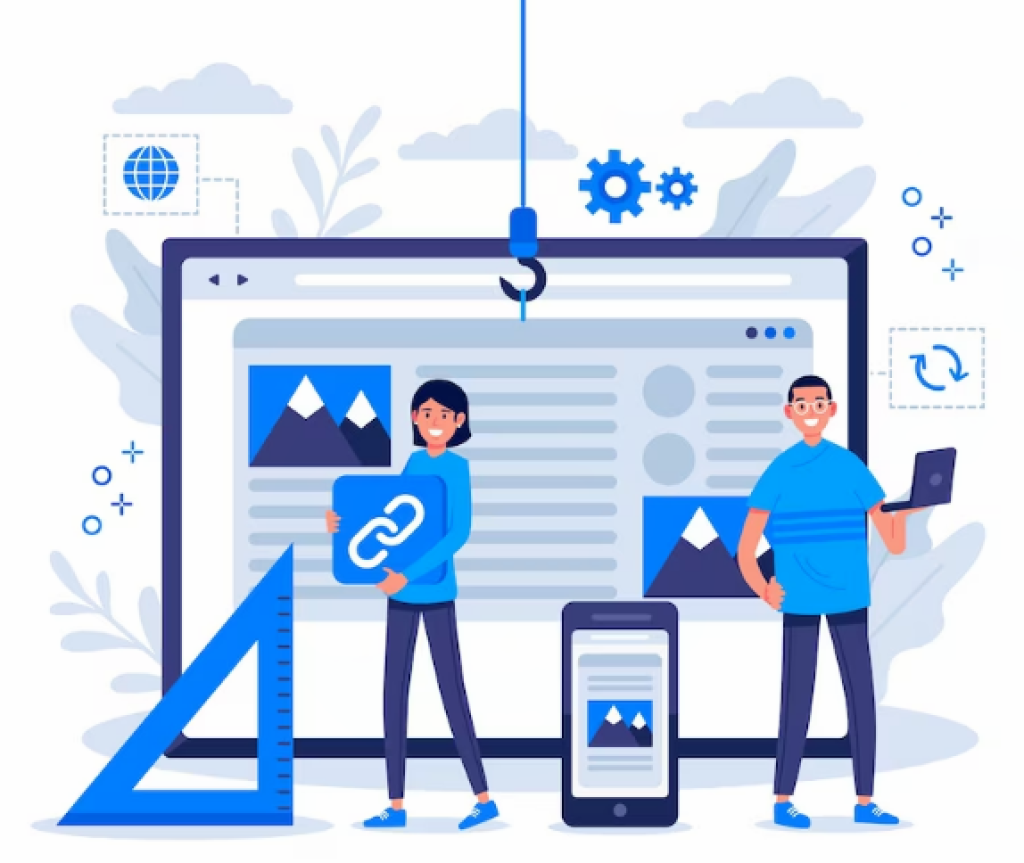
A web application is a software program or application that is accessed and operated through a web browser or web-enabled device. It is designed to perform specific functions or provide services over the Internet. Web applications have become an integral part of our digital lives and are used for a wide range of tasks, including online shopping, social networking, email services, and much more.
Web applications can be categorized into two main types:
- Static Web Applications: These web applications display the same content to every user. They are typically built using HTML, CSS, and sometimes JavaScript. Static web applications are suitable for websites that don’t require frequent updates or user interactions. Examples include informational websites and personal blogs.
- Dynamic Web Applications: Dynamic web applications offer personalized content to users and allow for real-time interactions. They are usually developed using server-side scripting languages like PHP, Ruby on Rails, or Python. Dynamic web applications are ideal for more complex tasks, such as e-commerce sites, social media platforms, and online banking systems.
Web applications work by sending requests to a web server. The server processes these requests and sends back the relevant information to be displayed in the user’s web browser. This process involves multiple components, including web servers, databases, and user interfaces.
The importance of web applications in modern society cannot be overstated. They provide a convenient way for users to access services and information online, and they have become a vital part of businesses and communication. Web applications offer accessibility from anywhere with an internet connection, cross-platform compatibility, user-friendly interfaces, real-time data updates, and scalability to accommodate a growing user base.
Creating web applications is a complex process that involves a combination of front-end and back-end development. Front-end developers work on the user interface, while back-end developers handle server-side scripting, databases, and application logic.
Web applications are known for their key features, which include accessibility, cross-platform compatibility, user-friendly interfaces, real-time data updates, and scalability. They offer advantages such as easy maintenance and updates, lower development and deployment costs compared to native applications, and no need for users to download or install anything.
However, web application development also comes with challenges, including ensuring compatibility with various web browsers, optimizing performance, and addressing security concerns. Security is a significant concern, and developers must implement robust security measures to protect user data and prevent unauthorized access.
The future of web applications is promising, with emerging technologies such as Progressive Web Apps (PWAs) and Single Page Applications (SPAs) providing improved user experiences. As technology continues to evolve, web applications will become more integrated into our daily lives, offering even more convenience and possibilities.
Skills needed for web app development
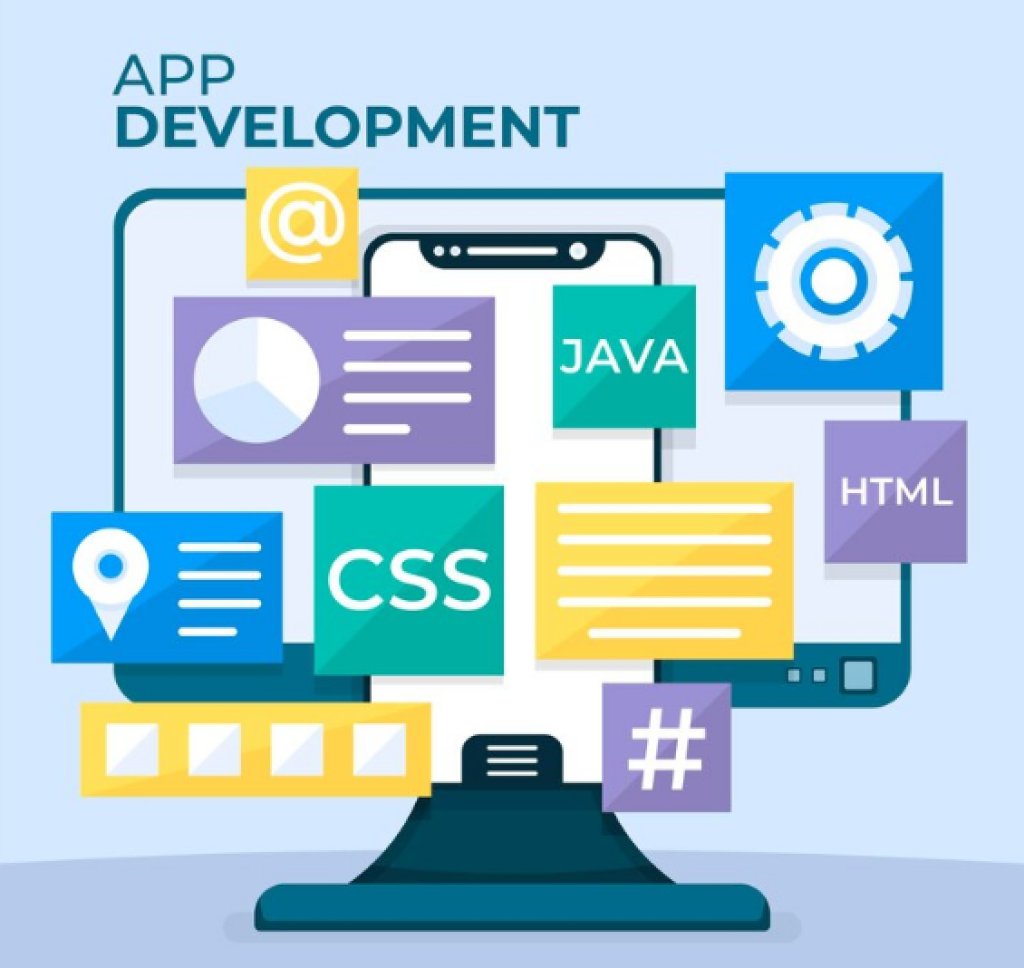
Web app development is a multifaceted field that requires a range of skills to create robust and efficient web applications. Here are the essential skills needed for web app development:
Front-End Development:
-
-
- HTML (Hypertext Markup Language): Fundamental for creating the structure and content of web pages.
- CSS (Cascading Style Sheets): Used for styling web pages, including layout, colors, and fonts.
- JavaScript: The core language for adding interactivity and functionality to web applications. Familiarity with JavaScript libraries and frameworks like React, Angular, or Vue.js is beneficial.
-
Back-End Development:
-
-
- Server-Side Languages: Proficiency in server-side programming languages like JavaScript (Node.js), Python, Ruby, PHP, Java, or C#.
- Web Frameworks: Knowledge of web frameworks such as Express.js, Django, Ruby on Rails, Laravel, or ASP.NET for efficient back-end development.
- Databases: Understanding of database management systems (DBMS) like MySQL, PostgreSQL, MongoDB, or SQL Server for data storage and retrieval.
-
Full-Stack Development:
-
- Full-stack developers are proficient in both front-end and back-end development, allowing them to handle the entire web app development process.
- Version Control/Git: Proficiency in version control systems like Git for tracking changes to code, collaborating with teams, and maintaining code repositories.
- Web Servers: Understanding of web server configurations and deployment, including Apache, Nginx, and cloud-based platforms.
- APIs (Application Programming Interfaces): Knowledge of creating, using, and integrating APIs to connect web applications with external services and data sources.
- Web Security: Familiarity with web security practices to protect web applications from common threats, including cross-site scripting (XSS), SQL injection, and data breaches.
- Testing and Debugging: Skills in testing web applications, including unit testing, integration testing, and debugging code to identify and fix issues.
- Responsive Design: Proficiency in creating web applications that adapt to various screen sizes and devices, ensuring a consistent user experience (responsive web design).
- Performance Optimization: Ability to optimize web applications for speed and efficiency, including minimizing page load times and efficient use of resources.
- Front-End Libraries and Frameworks: Knowledge of front-end libraries and frameworks, such as Bootstrap, Foundation, or Material-UI, for efficient development and consistent design.
- Web Development Tools: Proficiency in web development tools and environments, including code editors (e.g., Visual Studio Code), browser developer tools, and task runners/build tools (e.g., Webpack, Grunt, Gulp).
- Content Management Systems (CMS): Familiarity with popular CMS platforms like WordPress, Drupal, or Joomla for creating and managing web content.
- Basic Design Skills: A foundational understanding of design principles, including typography, layout, and color theory, to create visually appealing web interfaces.
- Soft Skills: Effective communication, problem-solving, and the ability to work in a team are essential soft skills for web developers.
- Continuous Learning: The field of web development is dynamic, and staying updated with the latest technologies and trends is crucial for long-term success.
- Project Management: Knowledge of project management methodologies and tools to effectively plan, execute, and deliver web development projects.
Web app development is a dynamic and evolving field, so developers often need to adapt and expand their skills as new technologies and practices emerge.
How Does a Web Application Work?

Web applications work by following a specific set of processes that enable users to access and interact with services or content over the Internet. Here’s a simplified explanation of how a web application functions:
- User Interaction: It all starts when a user opens a web browser and enters a web address or clicks on a link to a specific web application.
- Sending a Request: The web browser sends a request to a web server. This request includes the URL (Uniform Resource Locator) of the web application.
- Web Server Processing: The web server, which hosts the web application, receives the request. It processes the request and determines what content or data needs to be retrieved or generated. This content can include web pages, images, videos, or any other information stored on the server.
- Server-Side Processing: If the web application is dynamic, it often involves server-side scripting. This means that server-side scripts, written in languages like PHP, Ruby on Rails, or Python, generate the necessary content. For example, if a user is logged in, the server will retrieve their personalized data from a database.
- Database Interaction: In many cases, web applications interact with a database to retrieve or update information. This could be user account data, product listings, messages, and more. The server communicates with the database to retrieve or store the relevant data.
- Response Generation: Once the server has processed the request and gathered the necessary data, it generates a response. This response is typically in the form of HTML (Hypertext Markup Language) for web pages, but it can also include CSS (Cascading Style Sheets) for styling and JavaScript for interactivity.
- Sending the Response: The server sends the response back to the user’s web browser, usually in the form of HTML, along with any associated resources like images or stylesheets.
- Client-Side Processing: The user’s web browser receives the response and processes it. It renders the web page and executes any JavaScript code for interactivity. This allows users to interact with the web application, submit forms, click buttons, and perform various actions.
- Displaying the Web Page: The final result is displayed on the user’s screen as a fully functional web page. Users can see the content, interact with the application, and get the information or services they are seeking.
Web applications can be designed to work seamlessly across different devices and web browsers. They offer users the convenience of accessing services or information from anywhere with an internet connection. The process of requesting, processing, and delivering information is at the core of how web applications function, making them an integral part of our digital lives.
What is web Application Development?

Web application development is the process of creating and maintaining software applications that are accessed over the internet through web browsers or web-enabled devices. These applications, commonly known as web apps, provide various services, information, or interactive experiences to users. Web application development involves a combination of front-end and back-end development, database management, and user interface design. Here’s a breakdown of the key aspects of web application development:
- Front-End Development: Front-end development focuses on the user interface and user experience of a web application. Front-end developers work on designing and creating the visual elements of the application, including web pages, forms, buttons, and interactive features. They use technologies such as HTML (Hypertext Markup Language), CSS (Cascading Style Sheets), and JavaScript to build the client-side components of the application. Front-end development aims to create a user-friendly and visually appealing interface.
- Back-End Development: Back-end development is responsible for the server side of the web application. Back-end developers work on the logic and functionality that powers the application. This includes processing user requests, interacting with databases, handling security, and managing application data. Back-end development often involves server-side scripting languages such as PHP, Ruby on Rails, Python, Java, or Node.js. It ensures that the web application can handle user interactions, store data, and provide dynamic content.
- Database Management: Databases play a crucial role in web applications, as they store and retrieve data required for the application’s functionality. Back-end developers use database management systems like MySQL, PostgreSQL, MongoDB, or SQL Server to create, manage, and query databases. They design database schemas and ensure the efficient storage and retrieval of data.
- User Authentication and Security: Security is a paramount concern in web application development. Developers implement user authentication systems to verify user identities and ensure that sensitive data is protected. They use encryption and secure coding practices to prevent unauthorized access, data breaches, and other security threats.
- Testing and Quality Assurance: Testing is an essential part of web application development. Developers and quality assurance teams perform various tests, including unit testing, integration testing, and user acceptance testing, to identify and resolve issues and ensure that the application functions as intended.
- Deployment and Hosting: Once the web application is developed and tested, it needs to be deployed to a web server. Hosting services or cloud platforms are often used to make the application accessible to users over the internet. Deployment involves configuring the server environment, setting up domain names, and ensuring the application’s scalability and performance.
- Maintenance and Updates: Web applications require ongoing maintenance to keep them secure and up-to-date. Developers may need to fix bugs, add new features, and adapt to changing technologies and user requirements.
Web application development is a dynamic field that evolves alongside advances in technology and user expectations. Successful development teams need to keep up with best practices, security measures, and emerging trends to create robust, user-friendly, and responsive web applications that meet the needs of businesses and individuals in the digital age
Web application development frameworks

Web application development frameworks are pre-built structures and libraries that simplify the process of creating web applications. They provide a foundation and common structure for developers, speeding up development and ensuring best practices are followed. Here are some popular web application development frameworks:
Front-End Frameworks:
- React: Developed by Facebook, React is a JavaScript library for building user interfaces. It’s widely used for creating interactive and dynamic front-end components.
- Angular: Developed by Google, Angular is a comprehensive framework for building complex web applications. It offers features like dependency injection, two-way data binding, and powerful tooling.
- Vue.js: A progressive JavaScript framework for building user interfaces. Vue.js is known for its simplicity and ease of integration with other projects.
- Ember.js: A framework for ambitious web applications. It provides tools and best practices to create scalable and maintainable applications.
- Svelte: An emerging front-end framework that compiles components into highly optimized JavaScript, resulting in fast and efficient web applications.
Back-End Frameworks:
- Express.js: A minimalist Node.js web application framework that simplifies the development of robust and scalable server-side applications.
- Django: A high-level Python framework known for its “batteries-included” approach, providing built-in tools for common web development tasks.
- Ruby on Rails: Also known as Rails, it’s a popular framework for building web applications using the Ruby programming language. It follows the Model-View-Controller (MVC) pattern.
- Laravel: A PHP web application framework that focuses on developer productivity and code elegance. It provides features like authentication, routing, and ORM.
- ASP.NET: A framework by Microsoft for building web applications using C# or F# programming languages. It includes both MVC and Web API for building RESTful services.
- Spring Boot: Part of the larger Spring framework, Spring Boot is a Java-based framework for creating stand-alone, production-grade web applications.
Full-Stack Frameworks:
- Meteor: A full-stack JavaScript platform for building real-time web applications. It covers both the front-end and back-end development.
- MEAN Stack: An acronym for MongoDB (database), Express.js (back end), Angular (front end), and Node.js (runtime). This stack allows developers to create web applications using a single language, JavaScript.
- MERN Stack: Similar to MEAN but replaces Angular with React for the front end. It offers a full JavaScript-based stack for web development.
Real-Time Frameworks:
- Socket.io: A real-time web application framework for building WebSocket-based applications, enabling bi-directional communication between clients and the server.
- Firebase: A cloud-based platform that includes real-time database, authentication, and hosting services, making it easy to create real-time web applications.
These web application development frameworks provide a structured approach to building web applications, each with its strengths and use cases. The choice of framework depends on your project’s requirements, programming language preference, and the specific features and scalability needed for your web application.
Types of Web Applications
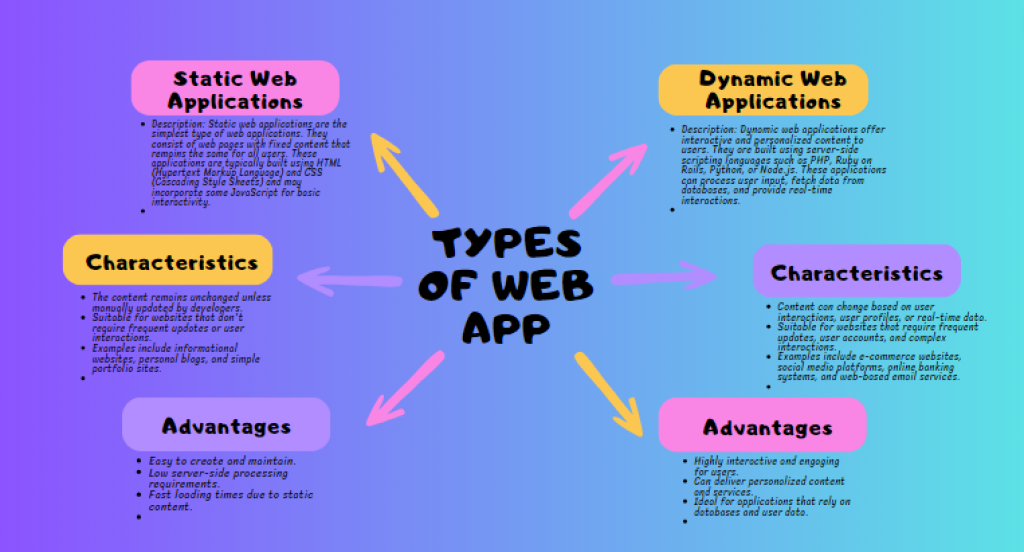
Web applications come in various forms, each designed to serve specific purposes and cater to different user needs. Here are two main types of web applications:
Static Web Applications:
-
-
- Description: Static web applications are the simplest type of web applications. They consist of web pages with fixed content that remains the same for all users. These applications are typically built using HTML (Hypertext Markup Language) and CSS (Cascading Style Sheets) and may incorporate some JavaScript for basic interactivity.
-
Characteristics:
-
-
-
- The content remains unchanged unless manually updated by developers.
- Suitable for websites that don’t require frequent updates or user interactions.
- Examples include informational websites, personal blogs, and simple portfolio sites.
-
-
Advantages:
-
-
-
- Easy to create and maintain.
- Low server-side processing requirements.
- Fast loading times due to static content.
-
-
Dynamic Web Applications:
-
-
- Description: Dynamic web applications offer interactive and personalized content to users. They are built using server-side scripting languages such as PHP, Ruby on Rails, Python, or Node.js. These applications can process user input, fetch data from databases, and provide real-time interactions.
-
Characteristics:
-
-
-
- Content can change based on user interactions, user profiles, or real-time data.
- Suitable for websites that require frequent updates, user accounts, and complex interactions.
- Examples include e-commerce websites, social media platforms, online banking systems, and web-based email services.
-
-
Advantages:
-
-
- Highly interactive and engaging for users.
- Can deliver personalized content and services.
- Ideal for applications that rely on databases and user data.
-
These two categories, static and dynamic web applications, represent the extremes of a spectrum of web application types. In practice, many web applications combine elements of both to create a seamless and user-friendly experience. The choice of which type to use depends on the application’s specific requirements, including the desired level of interactivity, data processing, and user engagement.
Web apps vs websites

Web applications (web apps) and websites are both accessible via web browsers and are essential components of our online experience. However, they serve different purposes and have distinct characteristics. Here’s a comparison of web apps and websites:
Websites:
Content Presentation:
Websites primarily focus on presenting static content to visitors. They are information-centric and often serve as online brochures or publications.
Interaction Level:
Websites typically offer limited interactivity. Users can navigate between pages, read content, and view multimedia, but the level of engagement is generally low.
Examples:
Examples of websites include blogs, news sites, company landing pages, personal portfolios, and informational sites. They are content-oriented and provide information to the audience.
Development Tools:
Websites are built using HTML and CSS for structure and design. JavaScript may be used for enhancing user experience, but the primary focus is on presenting information.
Maintenance:
Websites require minimal maintenance unless there are updates to content or design. They do not typically have complex back-end systems.
Web Applications (Web Apps):
- Functionality and Interactivity:
- Web applications are software programs accessed through web browsers. They offer interactive functionality and are often used to perform specific tasks or provide services. Users can input data, receive dynamic results, and engage with the application.
Dynamic Content:
Web apps can display dynamic content based on user input or real-time data. They often involve complex calculations and database interactions to provide personalized experiences.
Examples:
Examples of web applications include social media platforms (e.g., Facebook), e-commerce sites (e.g., Amazon), email services (e.g., Gmail), and productivity tools (e.g., Google Docs). These applications facilitate user interactions, transactions, and data manipulation.
Development Tools:
Web applications involve both front-end and back-end development. Front-end development focuses on the user interface and user experience, while back-end development deals with server-side logic, databases, and security.
Maintenance and Updates:
Web apps require ongoing maintenance and updates to ensure functionality, security, and performance. They often have complex back-end systems that need regular attention.
In summary, websites are primarily information-driven and provide static content to visitors, while web applications are interactive, functional, and often transactional. Web apps require a more comprehensive development process and ongoing maintenance, whereas websites are simpler to create and maintain. The choice between a website and a web application depends on the specific goals and functionality you want to offer to your online audience.
Web app vs mobile apps

Web apps and mobile apps are two distinct types of applications designed for different platforms and use cases. Here’s a comparison between the two:
Web Apps:
- Platform: Web apps are accessed through web browsers on various devices, including desktop computers, laptops, tablets, and mobile phones. They are not limited to a specific operating system and can be used on any device with internet access.
- Development: Web apps are typically developed using web technologies such as HTML, CSS, and JavaScript. They are often responsive, meaning they adapt to different screen sizes and devices.
- Installation: No installation is required for web apps. Users can access them by simply visiting a website via a browser.
- Updates: Developers can update web apps on the server, and users will automatically access the latest version when they visit the website. Users don’t need to download or install updates.
- Distribution: Web apps are distributed through URLs or links. They are accessible to anyone with an internet connection, and no app store is needed for distribution.
- Cross-Platform: Web apps are inherently cross-platform, as they run in web browsers. Users can access them on various devices and operating systems without the need for separate app versions.
- Offline Access: Web apps can have limited offline functionality, but they require an internet connection for full access to features and content.
Mobile Apps:
- Platform: Mobile apps are specifically developed for mobile devices and are designed to run on specific operating systems, such as iOS (for Apple devices) and Android (for Android devices).
- Development: Mobile apps are built using platform-specific programming languages and development tools. For iOS, this often means using Swift or Objective-C, while Android apps are developed using Java or Kotlin.
- Installation: Mobile apps must be downloaded and installed from an app store (e.g., Apple App Store or Google Play Store). Users need to find and download the app to their devices.
- Updates: Updates for mobile apps are managed through app stores. Users are notified when updates are available, and they need to manually download and install them.
- Distribution: Mobile apps are distributed through dedicated app stores. Developers must comply with the rules and guidelines of these stores.
- Platform-Specific: Mobile apps are platform-specific. To reach users on both iOS and Android, developers often need to create separate versions of the app.
- Offline Access: Mobile apps can offer extensive offline functionality. Some features and content can be accessed without an internet connection.
In summary, web apps are accessible through web browsers, run on multiple devices and platforms, and don’t require installation. They are suitable for content delivery and simple interactions. Mobile apps, on the other hand, are platform-specific, must be installed from app stores, and offer more robust offline functionality. They are ideal for applications that require device-specific features, extensive interactivity, or offline access. The choice between a web app and a mobile app depends on the specific goals and requirements of the application.
Web app vs. native app vs. hybrid app
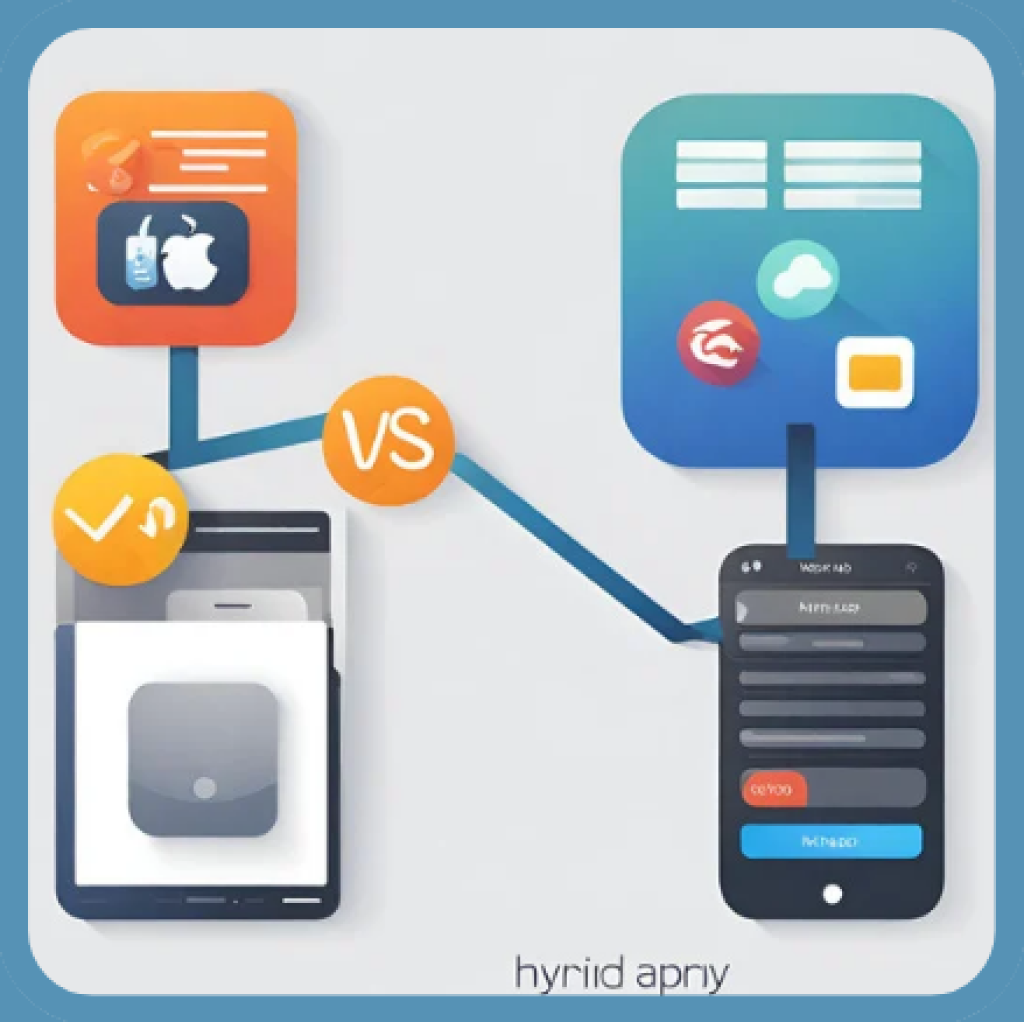
Web apps, native apps, and hybrid apps are three different approaches to mobile application development, each with its own set of characteristics and use cases. Let’s compare these three types of mobile applications:
Web Apps:
- Platform: Web apps are accessed through web browsers on mobile devices and are not platform-specific. They can run on any device with a compatible web browser.
- Development: Web apps are built using web technologies such as HTML, CSS, and JavaScript. They are responsive and adapt to various screen sizes.
- Installation: No installation is required for web apps. Users can access them by visiting a website through their mobile browser.
- Updates: Developers can update web apps on the server, and users will automatically access the latest version when they visit the website. No app store approval is needed.
- Distribution: Web apps are distributed through URLs or links, and there is no need for app stores for distribution.
- Access: Web apps rely on an internet connection for full functionality. They can have limited offline functionality but are primarily online.
Native Apps:
- Platform: Native apps are developed for specific mobile platforms, such as iOS (Apple) or Android (Google). They are platform-specific.
- Development: Native apps are built using platform-specific programming languages and development tools. For iOS, developers often use Swift or Objective-C, while Android apps are developed using Java or Kotlin.
- Installation: Users need to download and install native apps from app stores (e.g., Apple App Store or Google Play Store).
- Updates: Updates for native apps are managed through app stores. Users are notified when updates are available and must manually download and install them.
- Distribution: Native apps are distributed through dedicated app stores, and developers must comply with the rules and guidelines of these stores.
- Access: Native apps can offer extensive offline functionality and access to device-specific features. They can work without an internet connection for many tasks.
Hybrid Apps:
- Platform: Hybrid apps are developed using web technologies (HTML, CSS, JavaScript) but are packaged within a native container. They can be deployed on multiple platforms, making them more cross-platform.
- Development: Hybrid apps are created using frameworks like Apache Cordova or React Native, which allow developers to write code in web technologies and compile it as a native app.
- Installation: Hybrid apps are downloaded and installed from app stores like native apps. They are distributed as platform-specific packages.
- Updates: Like native apps, updates for hybrid apps are managed through app stores and require manual installation.
- Access: Hybrid apps can offer a mix of offline and online functionality. They can access device-specific features and are more versatile in terms of platform support.
In summary, web apps are platform-agnostic, native apps are platform-specific, and hybrid apps blend elements of both. The choice between these approaches depends on factors like development resources, target audience, required functionality, and offline capabilities. Web apps are suitable for content delivery and simple interactions, while native apps offer greater performance and access to device features. Hybrid apps aim to provide a balance between cross-platform compatibility and native capabilities.
What are progressive web apps (PWAs)?

Progressive Web Apps (PWAs) are a type of web application that combines the best of web and mobile app features to offer a reliable, fast, and engaging user experience. PWAs are designed to work on any platform with a standard-compliant browser, and they have several key characteristics:
- Progressive Enhancement: PWAs follow the principle of progressive enhancement, which means they should work for all users, regardless of the browser or device they are using. They take advantage of modern web capabilities while ensuring basic functionality for older browsers.
- Offline Functionality: One of the standout features of PWAs is their ability to work offline or in low-network conditions. They use service workers, which are scripts that run in the background, to cache content and enable offline access. This ensures that users can continue using the app even without a network connection.
- Responsive Design: PWAs are built with responsive web design, making them adaptable to various screen sizes and orientations. They provide a consistent user experience across desktops, tablets, and mobile devices.
- App-Like Experience: PWAs offer an app-like experience within the browser. They can be added to the user’s home screen and accessed from there, just like native mobile apps. PWAs often include features like push notifications and smooth animations for a more app-like feel.
- Improved Performance: PWAs are optimized for speed and performance. They load quickly and respond swiftly to user interactions, providing a smooth user experience.
- Safety and Security: PWAs are served over HTTPS, ensuring data security and privacy. This is particularly important for applications that handle sensitive information.
- Cross-Platform Compatibility: PWAs are platform-agnostic, meaning they can work on various devices and operating systems. This reduces the need to create separate versions of an app for different platforms.
- No Installation Required: Unlike native apps, PWAs don’t require users to download and install them from an app store. Users can access PWAs directly through a web browser, which simplifies the user onboarding process.
- App Updates: PWAs are updated on the server, and users always have access to the latest version when they use the app. This eliminates the need for manual updates or visits to app stores.
- Linkable: PWAs are easily shareable via URLs, making them accessible to anyone with a web browser. This simplifies marketing and distribution.
Progressive Web Apps have gained popularity due to their ability to provide a robust and accessible application experience while overcoming many of the limitations associated with native apps. They are particularly useful for businesses and developers looking to reach a broad audience with a single application that works well across different devices and network conditions.
Benefits of web application development

Web application development offers numerous benefits for businesses, individuals, and developers. Here are some of the key advantages of web application development:
-
Cross-Platform Compatibility: Web applications run in web browsers, making them accessible on various platforms and devices, including desktop computers, laptops, tablets, and smartphones. This cross-platform compatibility ensures a broader reach for your application.
-
No Installation Required: Unlike native apps, web applications do not need to be downloaded and installed from app stores. Users can access them instantly by visiting a website, simplifying the onboarding process.
-
Ease of Maintenance: Web applications can be updated on the server, meaning users always have access to the latest version when they visit the website. This eliminates the need for manual updates or visits to app stores.
-
Cost-Effective: Web application development can be more cost-effective than building separate native apps for different platforms. A single web app can serve users on multiple devices and operating systems.
-
Accessibility: Web apps are accessible to users with disabilities when designed with accessibility in mind. This helps ensure that a broader range of users can interact with the application.
-
Linkable and Shareable: Web applications are easily shareable via URLs, making them accessible to anyone with a web browser. This simplifies marketing, distribution, and sharing of the application.
-
Rapid Development: Web app development often requires less time than building native apps for each platform. It’s an efficient way to bring your application to market quickly.
-
Real-Time Updates: Web applications can provide real-time data and updates, ensuring users receive the latest information and content without the need for manual refreshes.
-
Scalability: Web applications can easily scale to accommodate a growing user base. Servers and infrastructure can be adjusted as needed to handle increased traffic and demand.
-
Offline Functionality: Progressive Web Apps (PWAs) offer offline functionality, allowing users to continue using the application even without an internet connection. This can be especially valuable in areas with unreliable connectivity.
-
Search Engine Optimization (SEO): Web applications can be optimized for search engines, making them more discoverable to users searching for relevant content or services online.
-
Uniform User Experience: Responsive design ensures a consistent and user-friendly experience across different screen sizes and orientations, maintaining a professional image for your brand.
-
Data Security: Web applications can be served over HTTPS, ensuring data security and privacy. This is essential for applications that handle sensitive information.
-
Analytics and User Insights: Web applications can easily integrate analytics tools to track user behavior, gather data, and gain insights into user interactions and preferences.
-
Lower Barrier to Entry: Users don’t need to download and install web applications, which can lower the barrier to entry and encourage more people to engage with the application.
Web application development offers a versatile and efficient way to create applications that can reach a broad audience while providing numerous benefits, from cost savings to ease of maintenance and accessibility.
6 steps for getting Started with web application development
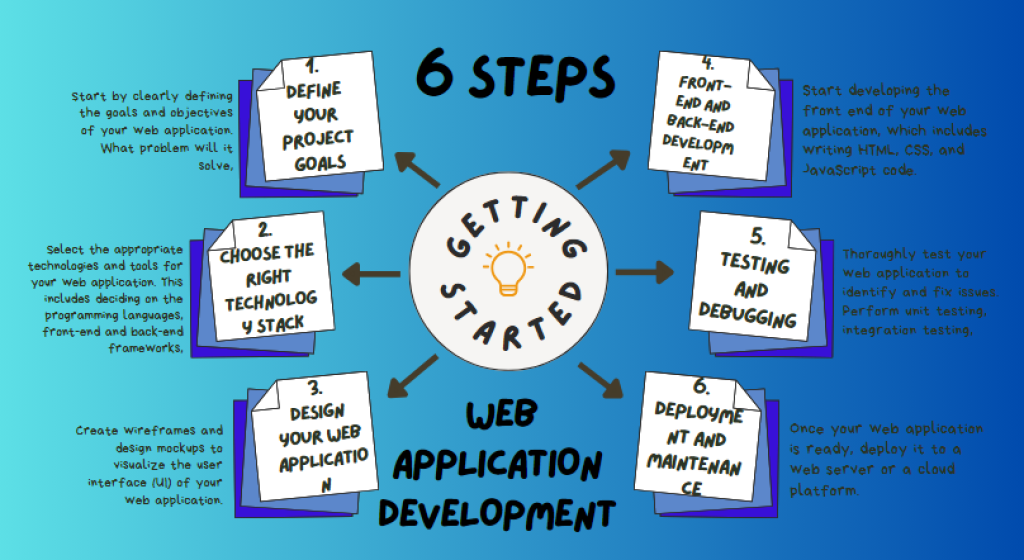
Getting started with web application development can be an exciting journey. Here are six steps to help you begin your web development project:
Define Your Project Goals:
-
-
- Start by clearly defining the goals and objectives of your web application. What problem will it solve, and who is the target audience? Understanding the purpose of your project is essential before you proceed.
-
Choose the Right Technology Stack:
-
-
- Select the appropriate technologies and tools for your web application. This includes deciding on the programming languages, front-end and back-end frameworks, and any databases or third-party services you may need. Consider factors like scalability, security, and your development team’s expertise when making these decisions.
-
Design Your Web Application:
-
-
- Create wireframes and design mockups to visualize the user interface (UI) of your web application. Consider user experience (UX) principles to ensure your application is intuitive and user-friendly. Tools like Adobe XD, Figma, or Sketch can assist with this step.
-
Front-End and Back-End Development:
-
-
- Start developing the front end of your web application, which includes writing HTML, CSS, and JavaScript code. You’ll also create the user interface (UI) and user experience (UX). Simultaneously, work on the back end, where you write server-side code, set up databases, and handle data storage and retrieval. Use frameworks and libraries to speed up development.
-
Testing and Debugging:
-
-
- Thoroughly test your web application to identify and fix issues. Perform unit testing, integration testing, and end-to-end testing to ensure that the application functions correctly. Debugging is a crucial part of this step, and tools like browser developer tools can assist in identifying and resolving issues.
-
Deployment and Maintenance:
-
- Once your web application is ready, deploy it to a web server or a cloud platform. Ensure that your hosting environment is secure and optimized for performance. After deployment, ongoing maintenance is crucial to address bugs, implement updates, and improve the application based on user feedback.
Additionally, consider the following best practices:
- Version Control: Use version control systems like Git to keep track of changes and collaborate with a development team.
- Security: Implement security measures to protect your web application from common threats, including authentication, data validation, and encryption.
- Scalability: Design your application with scalability in mind, so it can handle increased user load without performance issues.
- Documentation: Keep thorough documentation of your code, database schema, and application architecture for reference and future development.
Remember that web development is a continuous learning process. As you gain experience and work on more projects, your skills and understanding of web application development will evolve. Be prepared to adapt to changing technologies and stay informed about best practices and trends in the field.
Technology stack for web application development

The technology stack for web application development encompasses a combination of programming languages, frameworks, libraries, and tools that developers use to build the different layers of a web application, including the front end (client-side) and back end (server-side). Here’s an overview of the key components of a typical web application technology stack:
Front-End (Client-Side):
HTML (Hypertext Markup Language): The foundation of web development, HTML is used to structure the content and layout of web pages.
CSS (Cascading Style Sheets): CSS is used for styling and design, enabling developers to control the appearance and layout of web pages.
JavaScript: JavaScript is a versatile scripting language used to add interactivity and functionality to web pages. It can be used with various libraries and frameworks.
Front-End Frameworks: Popular front-end frameworks like React, Angular, and Vue.js provide pre-built components and tools for creating responsive, dynamic, and interactive user interfaces.
Responsive Design: CSS frameworks like Bootstrap or Materialize help create responsive web designs that adapt to different screen sizes and devices.
API Integration: Web applications often integrate with third-party APIs (Application Programming Interfaces) to access external services and data.
Build Tools: Tools like Webpack and Gulp automate tasks such as code bundling, minification, and transpilation, helping streamline front-end development.
Back-End (Server-Side):
Programming Languages: The choice of programming language for the back end depends on the developer’s preference and the specific requirements of the project. Common options include:
- Node.js (JavaScript)
- Python
- Ruby
- Java
- PHP
- C# (with ASP.NET)
- Go
Web Frameworks: Back-end frameworks provide a structured way to handle routing, data processing, and server management. Examples include Express.js (for Node.js), Django (for Python), Ruby on Rails, Spring (for Java), and Laravel (for PHP).
Databases: Web applications rely on databases to store and manage data. Common types include relational databases (e.g., MySQL, PostgreSQL), NoSQL databases (e.g., MongoDB, Cassandra), and in-memory databases (e.g., Redis).
APIs and Web Services: Back-end development often involves building APIs (Application Programming Interfaces) to communicate with the front-end and third-party services.
Authentication and Authorization: User authentication and access control mechanisms are crucial for securing web applications. Libraries like Passport.js (for Node.js) or Devise (for Ruby) assist with user authentication.
Server Environment: Web applications run on web servers. Popular choices include Apache, Nginx, and Microsoft Internet Information Services (IIS).
Content Management System (CMS): In some cases, a CMS like WordPress or Drupal may be integrated to simplify content management and administration.
Database and Data Storage:
- Relational Databases: Used for structured data and relationships, they include MySQL, PostgreSQL, SQL Server, and Oracle.
- NoSQL Databases: Ideal for unstructured or semi-structured data, popular NoSQL databases include MongoDB, Cassandra, and Couchbase.
- Caching Systems: To improve performance, caching systems like Redis and Memcached are often employed.
Development and Deployment Tools:
- Version Control: Git is widely used for source code version control.
- IDEs (Integrated Development Environments): Popular IDEs include Visual Studio Code, PyCharm, and IntelliJ IDEA.
- DevOps Tools: Tools like Docker and Kubernetes are used for containerization, orchestration, and automated deployment.
- Testing and Debugging Tools: Tools like Selenium, Jest, and Postman help with testing and debugging web applications.
- Continuous Integration/Continuous Deployment (CI/CD): CI/CD tools like Jenkins and Travis CI automate the testing and deployment processes.
- Cloud Services: Cloud platforms such as AWS, Azure, and Google Cloud provide scalable infrastructure for hosting web applications.
- Monitoring and Analytics: Tools like Google Analytics and New Relic help monitor web application performance and user behavior.
The specific components of a web application technology stack may vary based on the project’s requirements, developer expertise, and the desired functionality of the application. The technology stack is chosen to ensure that the application performs efficiently, is secure, and meets the needs of its users.
Web application development process
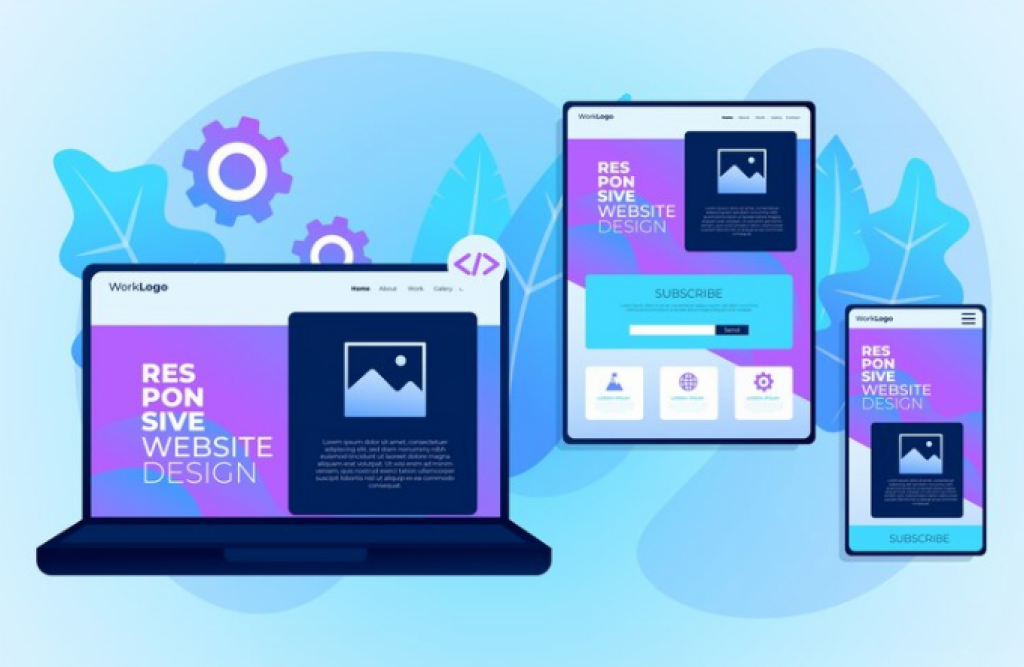
Web application development is a structured process that involves several stages, from conceptualization to deployment and maintenance. Here’s an overview of the typical web application development process:
Conceptualization and Planning:
-
-
- Define the purpose and goals of the web application.
- Identify the target audience and their needs.
- Create a project plan, including timelines and budget estimates.
- Conduct market research and competitor analysis.
-
Requirements Gathering:
-
-
- Collaborate with stakeholders to gather detailed requirements.
- Create a functional specification document that outlines the features and functionality of the web app.
-
Architecture and Design:
-
-
- Define the system architecture, including the front-end and back-end components.
- Create wireframes and prototypes to visualize the user interface.
- Design the database schema and data models.
- Develop a system design document that describes the technical architecture.
-
Front-End Development:
-
-
- Develop the user interface (UI) based on the approved designs.
- Write HTML, CSS, and JavaScript code for the front end.
- Ensure the web app is responsive and works on various devices and screen sizes.
-
Back-End Development:
-
-
- Select the appropriate programming language and framework for the back end.
- Create server-side logic, implement business rules, and set up APIs.
- Develop and connect to databases for data storage and retrieval.
-
Database Development:
-
-
- Create and configure the database based on the defined schema.
- Implement data validation and ensure data integrity.
- Optimize database performance.
-
Integration of Third-Party Services:
-
-
- Integrate external services, APIs, or third-party tools as needed.
- Implement authentication and authorization mechanisms.
-
Testing and Quality Assurance:
-
-
- Perform various types of testing, including unit testing, integration testing, and user acceptance testing.
- Identify and resolve bugs, issues, and inconsistencies.
- Ensure the web app is responsive, secure, and performs well.
-
Deployment:
-
-
- Choose a hosting environment, whether on-premises or in the cloud.
- Configure the server infrastructure and set up the necessary server components.
- Deploy the web application to the chosen hosting environment.
-
User Training and Documentation:
-
-
- Develop user documentation and training materials.
- Conduct training sessions for end users and administrators if required.
-
Launch:
-
-
- Make the web application accessible to the intended audience.
- Monitor and address any launch-related issues promptly.
-
Post-Launch Evaluation:
-
-
- Continuously monitor the web application’s performance and user feedback.
- Make updates and improvements based on user insights and evolving needs.
-
Maintenance and Support:
-
-
- Provide ongoing support and maintenance to address issues, fix bugs, and implement updates.
- Stay updated with security patches and ensure data backups.
-
Scalability and Growth:
-
-
- Plan for scalability to accommodate a growing user base.
- Implement features and updates based on user feedback and business goals.
-
Marketing and Promotion:
-
- Develop a marketing strategy to promote the web application to its target audience.
- Use various marketing channels to increase user adoption.
The web application development process is iterative and may involve multiple cycles of development and improvement, especially for larger and more complex projects. Effective communication and collaboration among the development team, stakeholders, and end users are crucial for the success of the web application.
Web application development validation And Deployment

Web application development validation and deployment are critical phases in the development process that ensure the application is thoroughly tested and made accessible to users. Here’s a detailed overview of these phases:
Validation:
Unit Testing: Developers perform unit tests to validate individual components or functions within the application. These tests focus on ensuring that each part of the code works correctly.
Integration Testing: Integration tests are conducted to ensure that different components of the application work seamlessly together. Developers check if various modules interact correctly.
Functional Testing: Functional tests assess the application’s functionality by verifying if it meets the specified requirements. Test cases are created to evaluate user interactions and system responses.
User Acceptance Testing (UAT): UAT involves end users or stakeholders testing the application to ensure it meets their expectations and requirements. Feedback is gathered, and any necessary adjustments are made.
Regression Testing: After making changes based on feedback and testing, regression testing is performed to verify that new updates haven’t broken existing functionality.
Performance Testing: Performance testing evaluates the web application’s speed, responsiveness, and scalability. It assesses how the application performs under different loads, including stress testing, load testing, and scalability testing.
Security Testing: Security testing identifies vulnerabilities in the application and assesses its resilience against common security threats, such as SQL injection, cross-site scripting, and data breaches.
Compatibility Testing: Compatibility tests ensure that the web application functions correctly across various browsers, devices, and operating systems. This includes testing on different versions of popular web browsers.
Accessibility Testing: Accessibility tests are essential to verify that the application is usable by individuals with disabilities. The application should meet accessibility standards, such as WCAG (Web Content Accessibility Guidelines).
Usability Testing: Usability testing assesses the overall user experience by having real users interact with the application. Feedback is collected to improve the user interface and workflow.
Data Validation: Data validation ensures that the application properly validates user input and handles data securely to prevent issues like SQL injection.
Deployment:
Server Setup: Set up the production server environment where the web application will be hosted. This includes configuring the web server, database server, and other necessary software.
Database Deployment: Deploy the application’s database to the production server, ensuring it’s configured correctly and is synchronized with the development database.
Code Deployment: Upload the application code to the production server. This may involve using version control systems like Git or deployment scripts for automation.
Domain Configuration: Configure the domain name and DNS settings to point to the production server’s IP address.
SSL Certificate Installation: If the web application requires secure communication, install an SSL certificate to enable HTTPS.
Load Balancing (Optional): For applications with high traffic or reliability requirements, implement load balancing to distribute incoming traffic across multiple servers.
Monitoring and Logging: Set up monitoring tools to track the performance, security, and user activity of the live application. Implement logging for debugging and issue tracking.
Backup and Recovery: Establish a backup and recovery plan to ensure data and application integrity in case of server failures or data loss.
Scaling: Plan for future scalability, including provisions for adding resources and servers as the application’s user base grows.
Release to Users: Once all steps are completed and thoroughly tested in the production environment, the web application is made available to users through the assigned domain or URL.
User Support and Maintenance: Continuously monitor the application’s performance, address user issues, and provide ongoing support and maintenance.
The validation and deployment phases are critical for ensuring that the web application is error-free, secure, and accessible to users. These processes aim to provide a smooth and reliable user experience while maintaining the application’s integrity and performance.
Why Does Your Business Need A web app?

Web applications, or web apps, serve a variety of purposes and offer several advantages that make them essential in today’s digital landscape. Here are some reasons why you need web apps:
Accessibility: Web apps are accessible from any device with a web browser and an internet connection. Users can access your application from desktops, laptops, smartphones, and tablets, making it easy to reach a broad audience.
Cross-Platform Compatibility: Unlike native apps that are designed for specific operating systems (e.g., iOS or Android), web apps are platform-agnostic. They work on multiple platforms without the need for separate codebases.
Cost-Effective Development: Developing web apps can be more cost-effective than building separate native apps for different platforms. It reduces development and maintenance expenses, as you maintain a single codebase.
Ease of Updates: Updating a web app is seamless. You can make changes to the code, content, or design, and users will instantly access the updated version when they reload the app.
No Installation Required: Users don’t need to install web apps from an app store. They can access the app by simply entering a URL in their web browser, which streamlines the onboarding process.
Wide Reach: Web apps are not limited to specific app stores, allowing users to find and access them through search engines, social media links, or direct referrals, increasing their discoverability.
Real-Time Information: Web apps can provide real-time updates and information without requiring users to download updates. This is particularly valuable for news, messaging, and real-time applications.
Search Engine Optimization (SEO): Web apps are easily discoverable by search engines, making it possible to optimize content and improve rankings for organic traffic.
Simplified Maintenance: With a single codebase, maintenance is more straightforward for web apps. Developers can make updates and improvements without managing multiple app versions.
Accessibility: Web apps can be designed to be accessible to users with disabilities, ensuring inclusivity and compliance with accessibility standards.
Data Integration: Web apps can easily integrate with external services and APIs, enabling seamless data sharing and third-party integrations.
Offline Functionality: Progressive web apps (PWAs) can work offline or in low network conditions, ensuring that users can still access and use the app even without a stable internet connection.
Reduced Development Time: Compared to native app development, web app development is often faster and more agile, allowing for quicker time-to-market.
Cloud-Based Storage: Many web apps utilize cloud-based storage and databases, ensuring data accessibility and scalability.
Security Measures: Developers can implement robust security measures in web apps, including encryption, authentication, and authorization, to protect user data.
Scalability: Web apps can be designed to scale easily, adapting to increased user demand and data volumes.
Environmental Impact: Web apps can be more eco-friendly, as they reduce the need for constant device storage and updates.
Whether you’re building an e-commerce platform, a productivity tool, a social network, or a news site, web apps offer a versatile and cost-effective solution to deliver content, services, and experiences to your target audience.
Web Application Development Trends

Web application development is an ever-evolving field, with trends and technologies constantly shaping the way applications are built and delivered. Here are some of the notable web application development trends to watch for:
Progressive Web Apps (PWAs): PWAs continue to gain popularity due to their ability to provide app-like experiences in web browsers. They offer offline access, push notifications, and fast loading times. Many businesses are adopting PWAs to improve user engagement and retention.
Single Page Applications (SPAs): SPAs, such as those built with frameworks like React and Vue.js, offer smooth and responsive user experiences by loading content dynamically, without full-page reloads. SPAs are ideal for interactive and real-time applications.
Serverless Architecture: Serverless computing allows developers to focus on code while the cloud provider manages server infrastructure. This approach reduces operational overhead and scales easily with demand.
Microservices: Microservices architecture breaks applications into small, independent services that communicate through APIs. It offers flexibility, scalability, and ease of maintenance, making it a popular choice for large and complex applications.
AI and Machine Learning Integration: Integrating AI and machine learning into web applications is becoming more common. These technologies are used for tasks like personalization, recommendation systems, and natural language processing.
Blockchain Integration: Blockchain technology is being integrated into web applications for secure and transparent data management, smart contracts, and decentralized applications (DApps).
Cybersecurity Emphasis: With an increasing number of data breaches, cybersecurity remains a top priority. Web developers are implementing security measures such as encryption, authentication, and security headers to protect user data.
WebAssembly (Wasm): WebAssembly is a binary instruction format for the web, enabling high-performance code execution in web browsers. It allows developers to write web applications in multiple languages and achieve near-native performance.
API-First Development: API-first development emphasizes building a robust API before developing the front end. This approach promotes efficient communication between front-end and back-end teams and can lead to more flexible and modular applications.
Low-Code and No-Code Development: Low-code and no-code platforms are simplifying web application development, allowing individuals with minimal coding experience to create functional applications.
Voice and Chatbot Integration: Voice interfaces and chatbots are increasingly used for customer support and user engagement. Developers are building voice-activated web apps and chatbot-driven interactions.
Web Real-Time Communication (WebRTC): WebRTC enables real-time audio and video communication directly in web browsers. It’s used in applications like video conferencing, online gaming, and remote support.
3D and VR Web Experiences: Three-dimensional (3D) graphics and virtual reality (VR) experiences are being integrated into web applications for immersive content, gaming, and virtual tours.
Edge Computing: Edge computing reduces latency by processing data closer to the user, making it an important trend for web applications that require real-time responsiveness.
Web 3.0 and Decentralization: Web 3.0 concepts, including decentralized applications (DApps) and the decentralized web, aim to provide more control and ownership of data to users. Blockchain and decentralized storage are key enablers of this trend.
Web application development is a dynamic field that responds to evolving user needs and technological advancements. Staying informed about these trends can help developers and businesses create applications that are innovative, competitive, and user-centric
The future of web Application Development
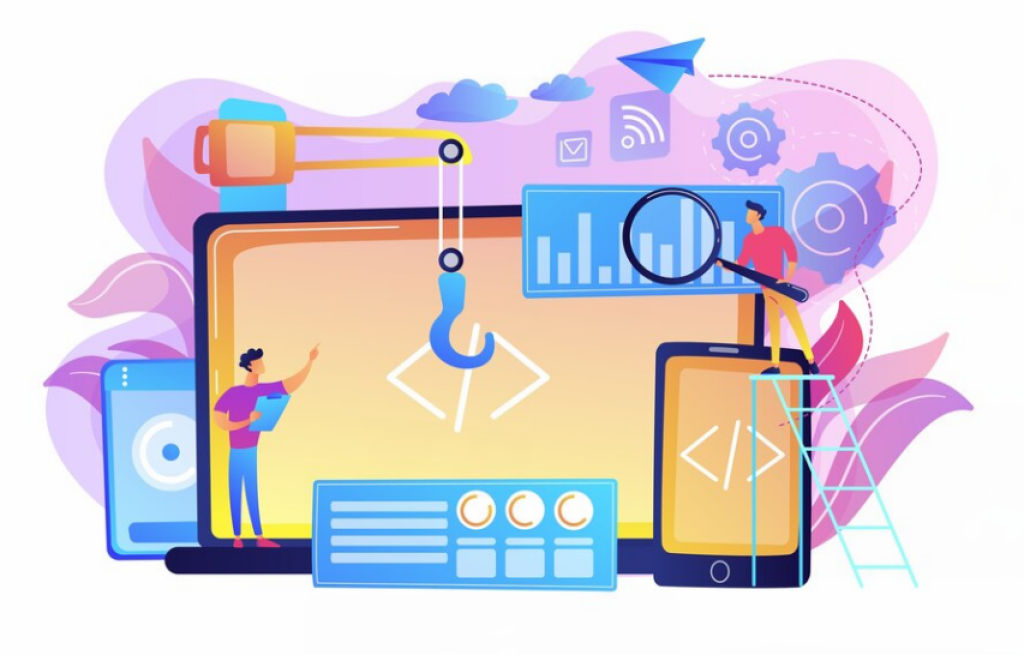
The future of web application development promises to be dynamic, with several trends and innovations shaping the landscape. Here’s a glimpse into what we can expect in the future of web application development:
AI and Machine Learning Integration: AI-driven web applications will become more intelligent, offering enhanced personalization, content recommendation, and real-time decision-making. Machine learning models will be trained to better understand user behavior and adapt to their needs.
5G Connectivity: The rollout of 5G networks will revolutionize web applications by enabling lightning-fast data transmission and reducing latency. This will lead to richer, more immersive experiences, such as high-quality video streaming, augmented reality (AR), and virtual reality (VR) applications.
Voice and Natural Language Processing: Voice-activated web applications and chatbots will become more sophisticated, providing users with seamless and natural interactions. Improved natural language processing (NLP) capabilities will make voice search and voice commands increasingly common.
Blockchain and Decentralization: Web 3.0 concepts will gain traction, emphasizing decentralized applications (DApps) and decentralized data ownership. Blockchain technology will be used to provide secure, transparent, and user-centric data management.
Edge Computing: Edge computing will continue to grow, reducing latency and improving real-time performance in web applications. This will be particularly important for applications that require instant data processing, such as IoT and real-time gaming.
WebAssembly (Wasm): WebAssembly will become more popular, allowing developers to write web applications in multiple languages and achieve near-native performance. This will expand the possibilities for web applications and extend their capabilities.
Enhanced Security Measures: As cyber threats evolve, web application developers will focus on implementing advanced security measures, including zero-trust architectures, secure coding practices, and biometric authentication.
No-Code and Low-Code Development: No-code and low-code platforms will continue to evolve, enabling non-developers to create web applications. These platforms will simplify the development process, making application creation more accessible.
AR and VR Integration: Augmented reality (AR) and virtual reality (VR) will become more integrated into web applications, offering immersive experiences for e-commerce, education, gaming, and training.
Quantum Computing: Although still in the early stages, quantum computing could revolutionize web application development by solving complex problems and optimizing data analysis.
Accessibility and Inclusivity: Web applications will place a greater emphasis on accessibility, ensuring that they are usable by individuals with disabilities. Compliance with accessibility standards, such as WCAG, will become the norm.
Eco-Friendly Development: As environmental concerns grow, web application developers will adopt eco-friendly practices. This includes optimizing code for energy efficiency and reducing the carbon footprint of data centers.
Cross-Platform Development: Cross-platform tools and frameworks will continue to simplify the development of web applications for various platforms, including desktop, mobile, and web.
Data Privacy and Ethics: Data privacy regulations and ethical considerations will drive the development of web applications that prioritize user data protection and ethical data use.
Hyper-Personalization: Web applications will offer hyper-personalization by collecting and analyzing user data to provide tailored content and experiences.
The future of web application development is exciting and filled with opportunities for innovation. As technology evolves, developers and businesses will need to adapt and embrace these trends to create web applications that are more advanced, user-friendly, secure, and responsive to changing user needs.
Cost of web application development
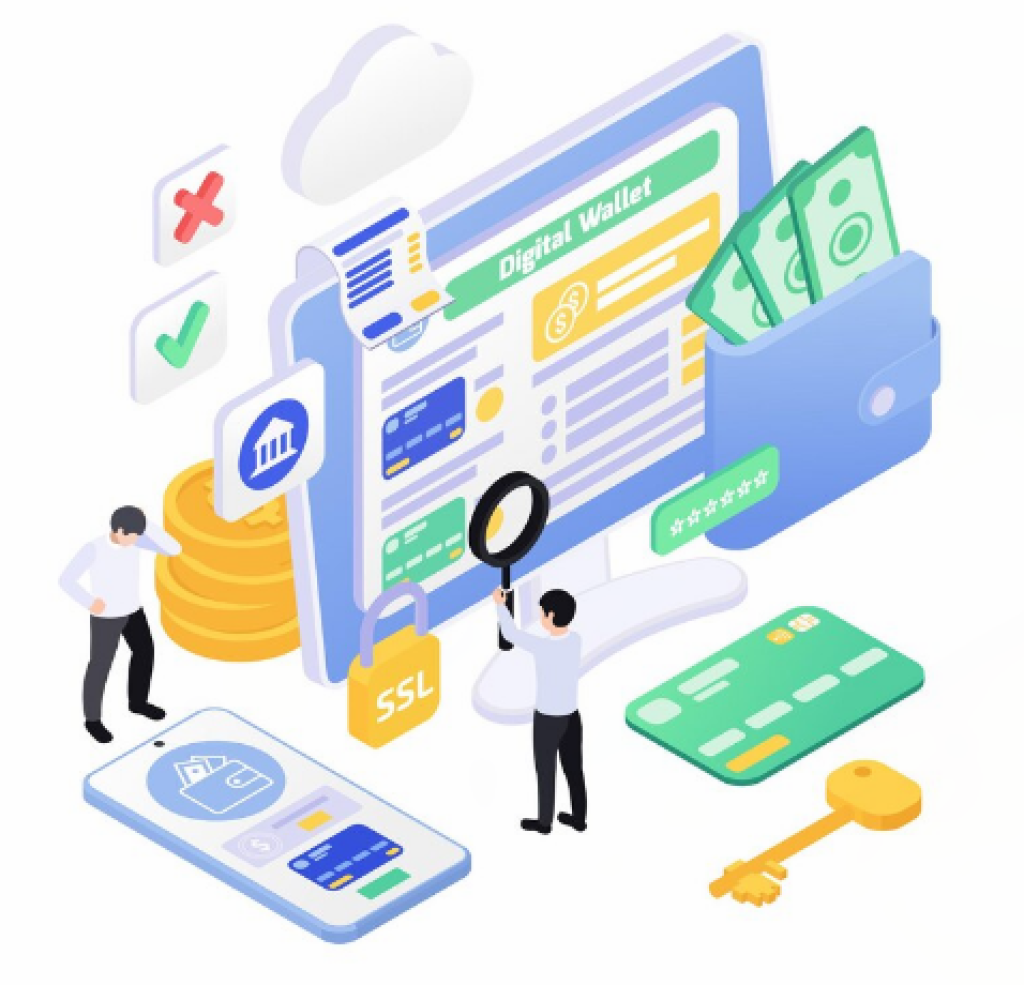
The cost of web application development can vary significantly based on various factors, including the complexity of the project, the features and functionality required, the technology stack used, the location of the development team, and other considerations. Here are some key factors that influence the cost of web application development:
Scope and Complexity: The size and complexity of the web application have a significant impact on the cost. Simple applications with basic features will cost less than complex, feature-rich applications.
Features and Functionality: The more features and functionalities you want to include, the higher the development cost. Features like user authentication, payment processing, real-time updates, and integrations with external services can add to the cost.
Technology Stack: The choice of programming languages, frameworks, and tools can affect development costs. Some technologies and frameworks are more cost-effective than others, but they may also have limitations.
Design and User Experience: High-quality user interface (UI) and user experience (UX) design can increase costs. A well-designed application is more engaging but may require additional design and development work.
Mobile Responsiveness: Ensuring that the web application is responsive and works well on various devices and screen sizes may increase development costs.
Customization: Custom development typically costs more than using off-the-shelf solutions or open-source platforms. Customization allows you to tailor the application to your specific needs but requires more development time.
Integration: If the application needs to integrate with third-party APIs, services, or databases, this can add to the development cost, as it requires additional coding and testing.
Testing and Quality Assurance: Rigorous testing, including functional, security, and performance testing, is essential but can increase costs. Comprehensive testing helps ensure the application works reliably.
Maintenance and Support: Ongoing maintenance and support are ongoing costs. You need to budget for updates, bug fixes, and technical support.
Location of Development Team: The geographic location of the development team affects costs. Developers in regions with a high cost of living generally charge more than those in lower-cost areas.
Project Timeline: An expedited project timeline may require more resources and can increase the cost. Longer development timelines may be more cost-effective but can delay time-to-market.
Compliance and Security: If your application handles sensitive data or needs to comply with specific regulations (e.g., GDPR or HIPAA), additional security and compliance measures may be necessary, increasing development costs.
Project Management: Effective project management can help control costs. Poorly managed projects can result in delays and budget overruns.
Third-Party Services: Depending on the application’s requirements, you may need to invest in third-party services, such as hosting, content delivery networks (CDNs), and domain registration.
Scalability: Planning for scalability can affect initial costs. Designing the application to scale easily as user demand grows may require more upfront investment.
It’s important to work closely with a development team or agency to define your project’s specific requirements and to obtain a detailed cost estimate. Consider the initial development cost and ongoing expenses for maintenance and updates when budgeting for web application development. Remember that investing in high-quality development can result in a more reliable and successful web application in the long run.
Top 5 Web Apps that Revolutionized the world
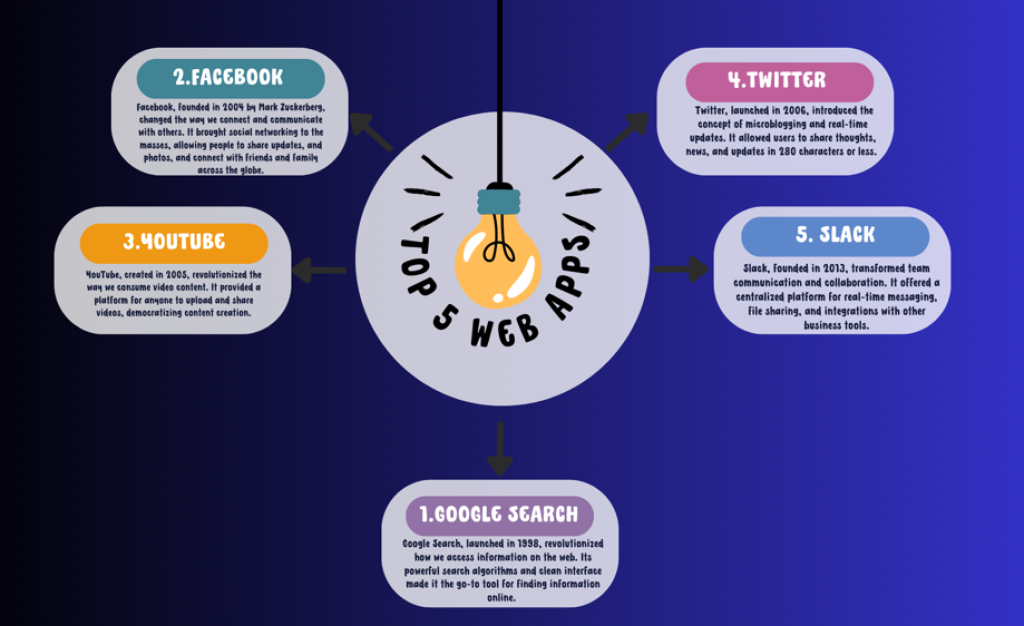
Several web applications have revolutionized the world by changing the way we communicate, work, and access information. Here are five web apps that have had a significant impact:
Google Search (1998): Google Search, launched in 1998, revolutionized how we access information on the web. Its powerful search algorithms and clean interface made it the go-to tool for finding information online. Google’s mission to organize the world’s information and make it universally accessible and useful has fundamentally transformed how we learn, research, and explore the web.
Facebook (2004): Facebook, founded in 2004 by Mark Zuckerberg, changed the way we connect and communicate with others. It brought social networking to the masses, allowing people to share updates, and photos, and connect with friends and family across the globe. Facebook’s impact on social interactions, online communities, and digital advertising is immense.
YouTube (2005): YouTube, created in 2005, revolutionized the way we consume video content. It provided a platform for anyone to upload and share videos, democratizing content creation. YouTube has become a hub for entertainment, education, and sharing, influencing the rise of video streaming and online video creators.
Twitter (2006): Twitter, launched in 2006, introduced the concept of microblogging and real-time updates. It allowed users to share thoughts, news, and updates in 280 characters or less. Twitter played a pivotal role in breaking news, shaping public discourse, and enabling direct communication between individuals and public figures.
Slack (2013): Slack, founded in 2013, transformed team communication and collaboration. It offered a centralized platform for real-time messaging, file sharing, and integrations with other business tools. Slack improved productivity and communication in workplaces worldwide, changing the way teams collaborate, especially in the era of remote work.
These web applications have not only changed how we interact with the internet but also influenced social dynamics, communication, and business practices on a global scale. They continue to evolve and shape the digital landscape.
What Can A web Application Do for Your Business?

A web application can offer numerous benefits to businesses of all sizes and across various industries. Here’s what a web application can do for your business:
Enhance Customer Engagement: Web applications provide a direct channel for businesses to engage with customers. They can offer personalized experiences, gather user feedback, and provide support, which fosters stronger customer relationships.
Improve Accessibility: Web applications are accessible from any device with an internet connection and a web browser. This enables businesses to reach a broader audience, including mobile users, without the need for separate native apps.
Increase Efficiency: Web applications can automate various business processes, reducing manual work and streamlining operations. This leads to increased efficiency and cost savings.
Expand Market Reach: With a web application, your business can reach a global audience. You’re not limited to a specific geographical location, and you can tap into new markets and customer segments.
Data Analytics and Insights: Web applications can collect and analyze user data, providing valuable insights into customer behavior, preferences, and trends. This data can inform business decisions and strategies.
E-commerce and Online Sales: Many businesses leverage web applications for e-commerce, enabling online sales and transactions. This extends their market reach and revenue opportunities.
Personalization: Web applications can offer personalized experiences by tailoring content and recommendations based on user behavior. Personalization enhances user engagement and satisfaction.
Content Management: Web applications provide tools for managing and updating content easily. This is crucial for businesses that rely on frequent content updates, such as news outlets and blogs.
Streamline Communication: Internal web applications can enhance communication and collaboration among employees, making project management and workflow more efficient.
Customer Support: Web applications can integrate customer support features, including chatbots, help desks, and knowledge bases, which improve customer service and problem resolution.
Cost-Effective Marketing: Web applications can be a cost-effective marketing tool. They can integrate with analytics, email marketing, and social media to promote products and services.
Scalability: Web applications can scale easily to accommodate growing user numbers and data volumes. This ensures that your business can handle increased demand without major disruptions.
Real-Time Updates: Web applications can provide real-time updates, notifications, and alerts to keep users informed about changes, events, or relevant information.
Data Security: Businesses can implement robust security measures, including encryption and user authentication, to protect sensitive data and ensure user trust.
Customization: Businesses can customize web applications to meet their specific needs and branding requirements. Customization ensures that the application aligns with your unique business objectives.
Integration: Web applications can integrate with other software systems, databases, and APIs, allowing businesses to access and share data seamlessly.
Remote Work Enablement: Web applications have become vital tools for enabling remote work and collaboration, a trend that has grown significantly in recent years.
Competitive Advantage: Having a well-designed and feature-rich web application can give your business a competitive edge by offering a superior user experience and services.
Overall, web applications offer businesses a versatile platform for improving customer interactions, streamlining operations, and adapting to changing market conditions. The specific benefits will depend on the business’s goals and the application’s design and functionality.
conclusion
web application development is a multifaceted and rapidly evolving field that plays a crucial role in our increasingly digital world. From e-commerce platforms and social networks to productivity tools and real-time applications, web development empowers us to create interactive and user-friendly experiences accessible from web browsers on a variety of devices.
Throughout this journey, we’ve explored the fundamental aspects of web application development, including the client-server model, front-end and back-end development, essential web technologies like HTML, CSS, and JavaScript, and the use of frameworks and libraries to streamline development.
We’ve also delved into the significance of databases and web servers, the importance of user experience (UX) and user interface (UI) design, and the critical need for security in web applications. Cross-browser compatibility and deployment are also key considerations in this field.
Web application development offers a wealth of opportunities for innovation and growth, and it remains an essential skill in a technology-driven world. The ability to create and maintain web applications that cater to the diverse needs of users is a valuable and dynamic skill set.
As you embark on your journey in web application development or continue to refine your expertise, remember that it’s a continuous learning process. Staying curious, adaptive, and open to new challenges is the key to success in this dynamic field. Keep exploring the latest trends, tools, and best practices, collaborate with peers, and engage with the web development community to expand your knowledge and make a meaningful impact in this exciting domain.
Most Common Q&As on Web Development
What is web development?
- Web development is the process of building and maintaining websites and web applications. It involves tasks like designing, coding, testing, and deploying web content.
What are the key components of a web application?
- A typical web application comprises a front end (client-side) and a back end (server-side). The front end includes the user interface and design, while the back end manages data and business logic.
What’s the difference between front-end and back-end development?
- Front-end developers work on the user interface and client-side functionality, while back-end developers handle server-side programming, databases, and server infrastructure.
What programming languages are commonly used in web development?
- Common front-end languages include HTML, CSS, and JavaScript. Popular back-end languages are JavaScript (Node.js), Python, Ruby, Java, PHP, and C#.
What are web frameworks?
- Web frameworks are pre-built libraries and tools that simplify web development. Examples include React, Angular, Vue.js (front end) and Express.js, Django, Ruby on Rails (back end).
What is responsive web design?
- Responsive web design is an approach that ensures websites and web apps adapt to different screen sizes and devices, providing a consistent user experience on desktops, tablets, and smartphones.
What is the difference between a website and a web application?
- Websites typically offer static content, while web applications are interactive and provide dynamic features. Web applications often have user accounts, databases, and real-time functionality.
What is the role of databases in web development?
- Databases store and manage data for web applications. Common types include relational databases (e.g., MySQL, PostgreSQL), NoSQL databases (e.g., MongoDB), and in-memory databases (e.g., Redis).
How is user authentication handled in web applications?
- User authentication is the process of verifying user identity. It’s often implemented using techniques like username/password, social login, or multi-factor authentication (MFA).
What is version control in web development?
- Version control systems like Git help track code changes, allowing developers to collaborate, revert changes, and maintain a history of code modifications.
What is the role of SEO in web development?
- SEO (Search Engine Optimization) involves optimizing web content to improve its visibility on search engines. Web developers ensure that websites are search engine-friendly by using proper HTML tags and optimizing content.
What is the difference between HTTP and HTTPS?
- HTTP (Hypertext Transfer Protocol) is unsecured, while HTTPS (HTTP Secure) encrypts data transmitted between the user’s browser and the web server, providing a secure connection.
How can I make my website load faster?
- Improving website speed involves optimizing images, minifying code, leveraging browser caching, using a content delivery network (CDN), and choosing efficient hosting.
What are web application security best practices?
- Web developers should implement security measures like data validation, input sanitization, and user authentication to protect against common threats, such as SQL injection and cross-site scripting (XSS).
What is the difference between a web application and a mobile app?
- Web applications are accessed through web browsers, while mobile apps are installed on mobile devices. Mobile apps can offer more device-specific functionality.
How do I choose the right technology stack for my web application?
- The technology stack depends on your project’s requirements. Consider factors like scalability, security, development expertise, and your budget when selecting technologies.
These are some of the common questions related to web development. Web development is a vast field, and the answers to these questions can vary depending on specific project requirements and technology choices.








